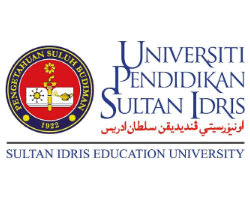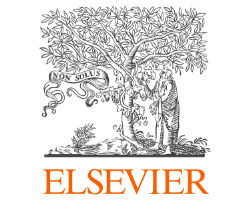Sources of Information, Training Needs, Preparation and Response to Disaster of Selected Communities in Central Luzon, Philippines
Abstract
Nature has its due course and disaster is always an aftermath of a catastrophic event. The purpose of this study is to assess the sources of information, training needs, preparation, and response of the community to disaster. To achieve this purpose, the study used a descriptive design with the survey as the instrument for data gathering. For the respondents, 136 individuals took part in the survey which took two months to accommodate. The researcher created a simple survey instrument and subjected it to reliability and validity tests. In analyzing the data, the researcher used weighted mean, standard deviation, t-test, and analysis of variance. Results showed that the radio is the most common source of information to disaster. Respondents emphasized the need for disaster training in the community and they also indicated that they partially observed the preparation and response in their communities. At the same time, there were significant differences observed in the sources of information, training needs, preparation, and response to the disaster of the respondents when grouped according to their communities. Furthermore, a significant difference emerged in the training needs when grouped according to the members of the family. Based on the results, the researcher recommends a community disaster preparation enhancement program for the involved communities in the study.
Downloads
References
M. Teo, A. Goonetilleke, A. Ahankoob, K. Deilami, and M. Lawie, “Disaster Awareness and Information-Seeking Behavior among Residents from Low Socio-Economic Backgrounds,” International Journal of Disaster Risk Reduction, vol. 40, pp. 1121-1131, 2018. 10.1016/j.ijdrr.2018.09.008.
A. Kisrschenbaum, C. Rapaport, and D. Canetti, “The Impact of Information Sources On Earthquake Preparedness,” International Journal of Disaster Risk Reduction, vol. 21, pp. 99-109, 2017. 10.1016/j.ijdrr.2016.10.018.
A.M. Mehta, A. Bruns, and J. Newton, “Trust, But Verify: Social Media Models For Disaster Management,” Disasters, 41(3), 549-565. 2016. 10.1111/disa.12218.
T. Nogami, “Disaster Myths among Disaster Response Professionals and The Source Of Such Misconception,” Journal of Contingencies and Crisis Management, vol. 26, no. 4, pp. 491-498, 2018. 10.1111/1468-5973.12218.
M.A. Meyer, J.C. Purdum, K. Breen, J.K. Aggrey, D. Forrest, C. Nunez, and W.G. Peacock, “Perspectives From Nongovernmental Organizations On Education And Training Needs For Community Disaster Recovery,” Journal of Emergency Management, vol. 17, no. 3, pp. 225-238, 2019. 10.5055/jem.2019.0422.
A. Howard, K. Agllias, M. Bevis, and T. Blakemore, “How Social Isolation Affects Disaster Preparedness And Response In Australia: Implications For Social Work,” Australian Social Work, 71(4), 392-404. 2018. 10.1080/0312407X.2018.1487461.
K.H. Goldschmidt, and S. Kumar, “Reducing The Cost of Humanitarian Operations Through Disaster Preparation And Preparedness,” Annals of Operations Research, vol. 283, pp. 1139-1152, 2019. 10.1007/s10479-017-2587-z.
T. Li, N. Xie, C. Zeng, W. Zhou, L. Zheng, Y. Jiang, Y. Yang, H.-Y. Ha, W. Xue, Y. Huang, S.-C. Chen, J. Navlakha, and S.S. Iyengar, “Data Driven Techniques In Disaster Information Management,” ACM Computing Surveys, vol. 50, no. 1, pp. 1-45, 2017. 10.1145/3017678.
L. Zheng, Y. Guo, S. Peeta, and B. Wu, “Impacts Of Information From Various Sources On The Evacuation Decision-Making Process During No-Notice Evacuations In Campus Environment,” Journal of Transportation Safety & Security, vol, 12, no. 7, pp. 892-923, 2020. 10.1080/19439962.2018.1549643.
M. C. Allaire, “Disaster Loss and Social Media: Can Online Information Increase Flood Resilience?” Water Resources Research, 52(9), 7408-7423. 2016. 10.1002/2016WR019243.
L. Zhuang, J. He, Z. Yong, X. Deng, and D. Xu, “Disaster Information Acquisition by Residents of China's Earthquake-Stricken Areas,” Reduction, vol. 51, pp. 101908, 2020. 10.1016/j.ijdrr.2020.101908.
Y.S. Ranjit, K.A. Lachlan, A.M.B. Basaran, L.B. Snyder, and J.B. “Houston Needingto “Know About The Crisis Back Home: Disaster Information Seeking And Disaster Media Effects Following The 2015 Nepal Earthquake Among Nepalis Living Outside Of Nepal,” International Journal of Disaster Risk Reduction, vol. 50, pp. 101725, 2020. 10.1016/j.ijdrr.2020.101725.
B. Ryan, “A Model To Explain Information-Seeking Behavior By Individuals In The Response To A Disaster,” Library & Information Science Research, vol. 40, no. 2, pp. 73-85, 2018. 10.1016/j.lisr.2018.05.001
R. Ullah, G.P. Shivakoti, F. Zulfiqar, M.N. Iqbal, and A.A. Shah, “Disaster Risk Management in Agriculture: Tragedies of the Smallholders,” Natural Hazards, vol. 87, pp. 1361-1375, 2017. 10/1007/s11069-017-2821-7
S. Achora, and J.K. Kamanvire, “Disaster Preparedness: Need for Inclusion in Undergraduate Nursing Education,” Sultan Qaboos University Medical Journal, vol. 16, no. 1, pp. e15-e19, 2016. 10.18295/squmj.2016.16.01.004
A.A. Shah, R. Shaw, J. Ye, M. Abid, S.M. Amir, A.K.M. Kanak, and S. Naz, “Current Capacities, Preparedness and Needs of Local Institutions In Dealing With Disaster Risk Reduction In Khyber Pakhtunkhwa, Pakistan,” International Journal of Disaster Risk Reduction, vol. 34, pp. 165-172, 2019. 10.1016/j.ijdrr.2018.11.014
M.-S. Sangkala, and M.-F. Gerdtz, “Disaster Preparedness And Learning Needs Among Community Health Nurse Coordinators In South Sulawesi Indonesia,” Australasian Emergency Care, vol. 21, no. 1, pp. 23-30, 2018. 10.1016/j.auec.2017.11.002
L. Nahayo, C. Mupenzi, A. Kayiranga, F. Karamage, F. Ndayisaba, E.-M. Yesheja, and L. Li, “Early Alert and Community Involvement: Approach for Disaster Risk Reduction in Rwanda,” Natural Hazards, vol. 86, pp. 505-517, 2016. 10.1007/s11069-016-2702-5
L.J. Labrague, K. Hammad, D.S. Gloe, D.M.M. Petitte, D.C. Fronda, A.A. Obeidat, and M.C. Leocadio, “Disaster Preparedness Among Nurses: A Systematic Review Of Literature,” International Nursing Review, vol. 65, no. 1, pp. 41-53, 2017. doi.org/10.1111/inr.12369
M. Peck, T. Mendenhall, L. Stenberg, N. Carlson and D.K. Olson “Disaster Behavioral Health Capacity: Findings from A Multistate Preparedness Assessment,” Journal of Emergency Management, vol. 14, no. 4, pp. 281-287, 2016. 10.5055/jem.2016.0293.
G. Taskiran, and U. Baykal, “Nurses’ Disaster Preparedness and Core Competencies in Turkey: A Descriptive Correlation Design,” International Nursing Review, vol. 66, no. 2, pp. 165-175, 2019. 10.1111/inr.125011
L.C. Khoe, and E.Y.Y. Chan, “Developing An Evidence-Based Training Program For Volunteers In Disaster And Emergency Preparedness,” Advanced Science Letters, vol. 24, no. 9, pp. 6502-6505, 2018. 10.1166/asl.2018.12756
K. Nicholls, S.J. Picou, and S.C. McCord, “Training Community Health Workers To Enhance Disaster Resilience,” Journal of Public Health Management and Practice, vol. 23, pp. S78-S84, 2017. 101097/PHH.0000000000000645
T. Hashimoto, K. Karasawa, K. Hirayama, M. Wada, and H. Hosaka, “Community Proactivity in Disaster Preparation: Research Based On Two Communities in Japan,” Journal of Disaster Research, vol. 13, no. 4, pp. 755-766, 2018). 10.20965/jdr.2018.p0755
A. Howard, T. Blakemore, and M. Bevis, “Older people as assets in disaster preparedness, response, and recovery: Lessons from regional Australia,” Ageing and Society, vol. 37, no. 3, pp. 517-536. 10.1017/S0144686X150011270, 2017.
K. Daellenbach, J. Parkinson, and J. Krisjanous, Just how prepared are you? An application of marketing segmentation and theory of planned behavior for disasterpreparation. Journal of Nonprofit & Public Sector Marketing, vol. 30, no. 4, pp. 413-443. 10.1080/10495142.2018.1452830, 2018.
J. Holguín-Veras, M. Jaller, F. Aros-Vera, J. Amaya, T. Encarnación, and T. Wachtendorf “Disaster Response Logistics: Chief Findings of Fieldwork Research. In: Zobel C., Altay N., Haselkorn M”. (eds) Advances in Managing Humanitarian Operations. International Series in Operations Research & Management Science. Springer, Cham. 10.1007/978-3-319-24418-1_3, 2016.
L. Matunhay, J. Milan, C. Paqueo, “Localizing disaster risk reduction. International Journal of Social Sciences, vol. 8, no. 1, pp. 31-42. 10.20472/SS.2019.8.1.003, 2019.
J. W. Creswell, “Research Design. Sage Publications, Inc.”, Thousand Oaks, CA, 2014.
R. Kiatpanont, U. Tanlamai, and P. Chongstitvatana, “Extraction of actionable information from crowdsourced disaster data”. Journal of Emergency Management, vol. 14, no. 6, pp. 377-390. 10.5055/jem.2016.0302, 2016.
N. Berhanu, H. Abrha, Y. Ejigu, and K. Woldemichael, “Knowledge, experiences and training needs of health professional about disaster preparedness and response in Southwest Ethiopia: A cross-sectional study. Ethiopia Journal of Health Science, vol. 26, no. 5, pp. 415-426. 10.4314/ejhs.v26i5.3, 2016.
E. Hong, and I. Lee, “Effectiveness of disaster training for community residents: A systematic review”. Journal of the Korean Society of Hazard Mitigation, vol. 18, no. 7, pp. 205-212. 10.9798/KOSHAM.2018.18.7.205, 2018.
D. B. Geges, and C. J. P. Faulmino, “The journey of organizing and empowering Yolanda affected community: Experiences from a post-disaster housing project in Javier, Leyte, Philippines”. Advances in Social Sciences Research Journal, vol. 4, no. 17, pp. 185-201. 10.14738/assrj.417.3098, 2017.























